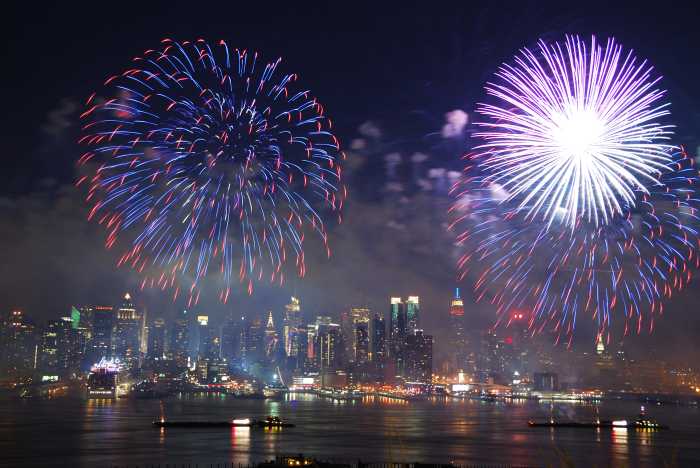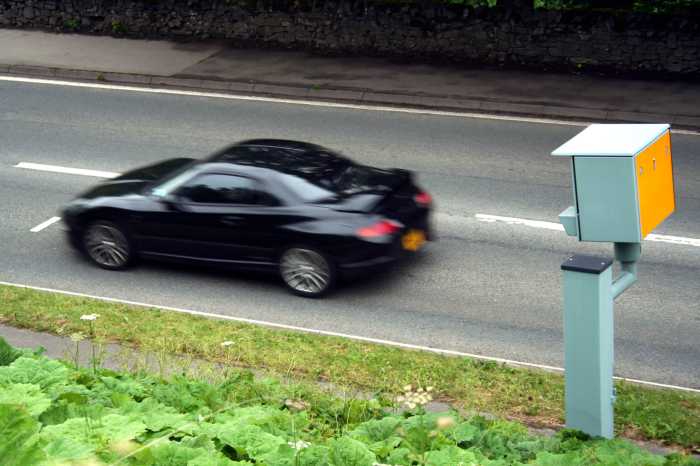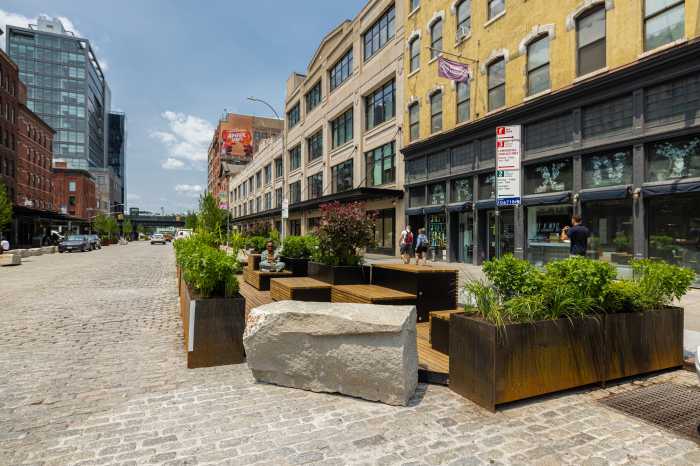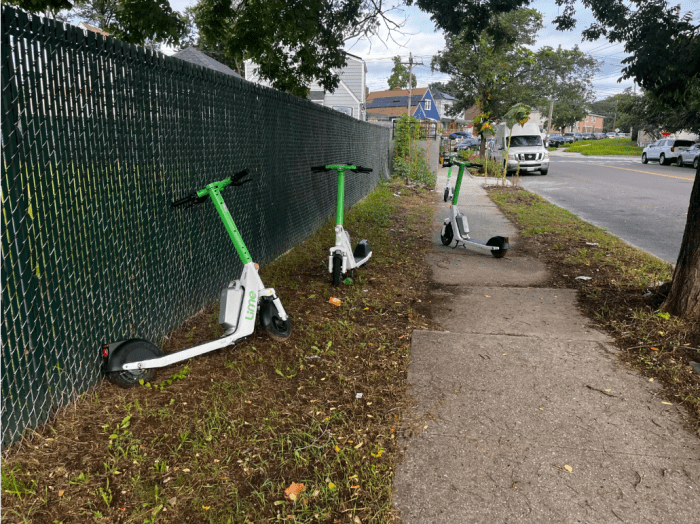
It stood for 78 years, but the demolition of the old Kosciuszko Bridge took a matter of seconds.
The Kosciuszko fell Sunday morning with a thunderous blast and clouds of smoke. Crowds collected along Newtown Creek and on the Greenpoint Avenue Bridge to watch the demise of the widely-loathed span. A few adventurous spectators took to kayaks for a water view of the destruction.
“The Kosciuszko Bridge is a legendary bottleneck in the city of New York and it has been for decades,” Gov. Andrew Cuomo said. “I think there’s been traffic on that bridge and a bottleneck since the day it was built.”
Cuomo was speaking at a viewing party he hosted along the Greenpoint waterfront with elected officials and winners of a lottery his office organized for members of the public looking to get a good glimpse of the action. Many in attendance brought their children to share the historic occasion.
“I just want to see a big explosion,” says Joe Riggs, 32, from Ridgewood, Queens, a lottery winner who brought his 17-month-old daughter, Delia, to say goodbye to the Kosciuszko. “This bridge has been outdated for about 70 years now. It’s past its useful life.”
The demolition strategy in place was known as “energetic felling.” It was implemented through the placement of 944 small charges at key joints on the bridge so that when the charges went off, the bridge broke apart and fell directly down. Crews worked to lighten and weaken the bridge before its implosion. The main span had been removed in July and workers made 1,600 cuts to steel parts so that a minimal amount of explosives were needed.
“We chose the energetic approach over others because it is the safest, most effective and least intrusive method of lowering them,” said Wahid Albert, chief engineer at the state’s Department of Transportation.
Cuomo joked that he would refuse to use the “crazy” term “energetic felling,” instead opting for implosion.
“An energetic felling. What does that mean? I don’t know,” Cuomo said. “I think it’s a new politically correct term for implosion.”
Twenty steel truss spans were dropped at 8 a.m. Sunday in the blast — totaling 22 million pounds of steel. The hundreds of charges went off within a half second of each other and the bridge was on the ground a half second after that.
Onlookers could not be within 1,500 feet of the bridge as it came down. Cuomo watched from Newtown Creek, on a small Department of Environmental Conservation motor boat packed with elected officials and news cameras.
Mark Loizeaux, president of Controlled Demolition Inc., which oversaw the implosion, said the demolition went better than expected. He had originally worried that an energetic felling would be impossible, given the bridge’s location atop old infrastructure.
“They spent a lot of money lightening the span so that there would be less vibration when these structures came down in what are really old neighborhoods with old utilities,” Loizeaux said. “There was a lot of trepidation about whether or not we could fell these structures in this environment.”
To absorb the vibration of the bridge’s collapse, the state built berms with recycled concrete and soil ranging from 15 to 25 feet tall. The blast was heard and felt as far away as Windsor Terrace, Brooklyn, where car alarms were set off, according to an account from social media.
“I’ve been using this bridge and going over it since I was a child — a lot of the time was spent just sitting in traffic,” said Dennis Agostino, who is in his 50s. “This is a once in a lifetime experience. It’s the end of an era.”
The demolition was part of the $873 million Kosciuszko Bridge replacement project, which is expected to accommodate 180,000 drivers each day. The old Kosciuszko, which opened in 1939, was built for only 10,000.
The new bridge’s first span was completed and opened to traffic in April. The second span of the new bridge is scheduled to be completed in 2019, Cuomo said. When it opens, it will offer five lanes on the Queens-bound side and four lanes — along with a pedestrian and cycling path — on the Brooklyn-bound side.
Cuomo said he wanted to keep the name of the bridge to preserve the legacy of Tadeusz Kosciuszko, a Polish volunteer who served as a general in the American Revolutionary War.






























